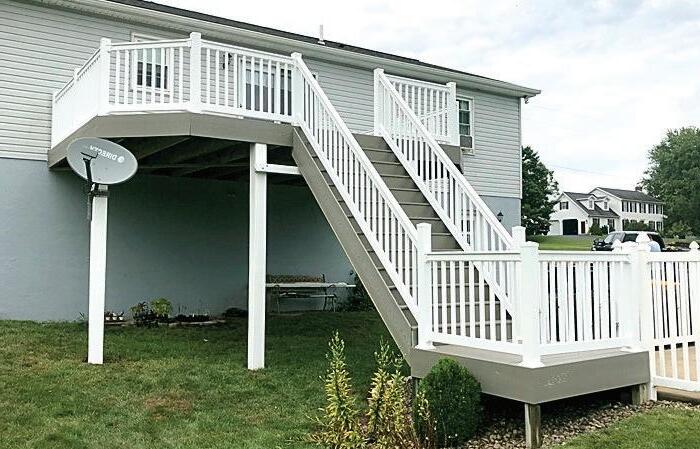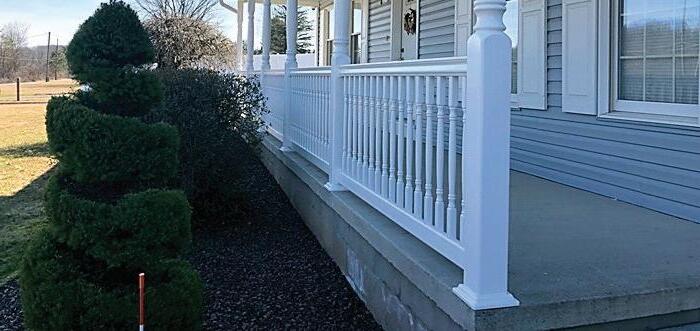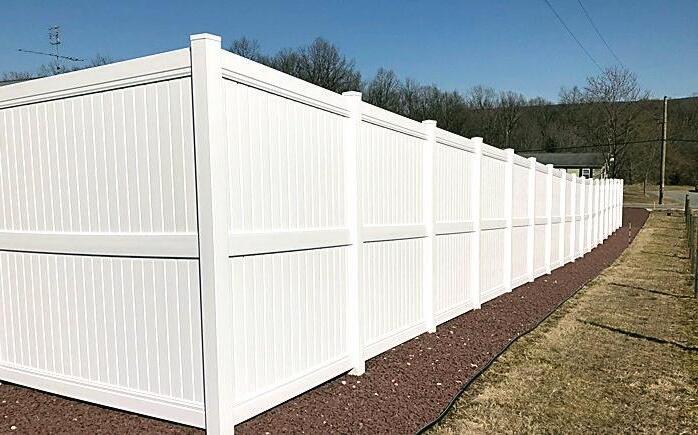




Each year, gardening enthusiasts anxiously await the arrival of spring. Spring is a great season to plant new flowers, plants, grasses, and trees, making it a popular time of year to spend sunny days out in the yard.
Veteran gardeners may know their landscapes well and be able to pick the right plants on their own. Novices may need a little help as they look to give their landscapes a whole new look. The following are some helpful tips to help homeowners pick the right plants for their landscapes.
• Conduct a site evaluation. A colorful landscape featuring an array of plants and flowers can be eye-catching and add curb appeal to a property. However, where plants will be planted is a significant variable that must be considered before homeowners choose what to plant. The Center for Agriculture, Food, and the Environment at the University of Massachusetts Amherst notes that site evaluation is the first step when picking plants. A number of factors must be evaluated, including light availability; water availability; exposure to the elements, including wind and extreme temperatures; and competition from existing vegetation, among other things. Document these variables prior to picking plants. For example, take note of the area you plan to plant to see if it is full sun or partial shade, and then pick plants whose growing conditions align with those you

observe.
• Look at more than looks. Aesthetic appeal might be what homeowners most desire from their landscapes, but that appeal is only achieved when the right plants are chosen for a space. If the wrong plants are chosen, they’re unlikely to thrive or they could threaten existing vegetation, thus compromising the overall appeal of the property. Native plants can often handle local weather conditions, so prioritize natives over more exotic plants whose key attribute is aesthetic appeal. If jaw-dropping aesthetic appeal is your top priority, speak with a local landscaping professional about which natives can provide that without compromising surrounding vegetation.
• Consider maintenance prior to planting. Maintenance is another variable gardeners must consider. Newly planted trees may require substantial watering until they’ve fully established their roots, and some homeowners may not have time for that. In addition,

certain plants may require a considerable amount of pruning in order to create and maintain the look homeowners desire. Individuals must be willing to invest the time and effort necessary to maintain new plantings that require such diligence. If not, look for plants that don’t require much maintenance while keeping in mind that even low-maintenance plants still require some effort and attention.
• Consider local wildlife. If your lawn is routinely visited by local wildlife, then look for plants that won’t look like a meal to these welcome, if uninvited, guests. For example, if you routinely see deer lounging around in your backyard, look for deer-resistant plants. This is a good way to protect your investment, of both time and money, and ensure minimal wildlife traffic through your newly landscaped yard.
Spring gardens are awe-inspiring, especially when homeowners embrace various strategies for successful planting.





New homeowners often see their homes as blank canvasses. Looking at a home as a blank canvas is typically associated with its interior, but it also can apply to landscaping.
visible to the naked eye, and homeowners should be conscious of those lines as they cut any high branches. But underground lines are not visible, and that can make clearing land dangerous. Homeowners are urged to contact their utility companies before they begin to clear any land so they can determine if any underground lines are beneath areas they intend to clear out.
Homeowners won’t want to cut down a tree, even a small one, if it can potentially fall onto the house. In addition, homeowners who are unfamiliar with chippers or stump grinders may be better of hiring a tree service to clear trees.
Homes are empty of furniture and decorative items like photos and art on the walls when new homeowners move in. That makes it easy to see the interior of a home as a blank canvas. But that’s not always so easy in the garden or the yard, where brush, overgrown plants or trees and other eyesores might have been left behind by the previous owners. A landscape must be cleared out before it can be seen as a blank canvas. Though clearing land may seem like a straightforward process, no one knows what lies beneath overgrowth or neglected areas of a yard or garden. Do-it-yourselfers can typically clear land on their own, but some safety strategies should be kept in mind to ensure the process goes smoothly.
Homeowners also may want to invest in a hard hat if they will be cutting branches off of trees or cutting trees down. A face shield also may be a good
bet depending on the scale and potential dangers of the project.
- Contact your utility company. Overhead power and telephone lines are
- Get a lay of the land. Carefully inspect the area to be cleared prior to starting the project. Inspections can reveal the density of any vegetation that may need to be removed and reveal if there are any harmful plants like poison ivy growing. Many DIYers can remove small trees on their own, but a professional tree service may be necessary for large trees or those located close to the house.
- Don’t go it alone. No one should clear land alone. Even small projects are best tackled by at least two people. Should someone get injured during the project, the presence of another person ensures someone can immediately call for help. In addition, clearing land can be more difficult than it appears, and having at least two people to pull old shrubs or carry tree branches reduces the risk of injury.
Safety should be the utmost priority as homeowners prepare to clear land on their properties.
- Wear appropriate PPE. Personal protective equipment should be worn when clearing land. The appropriate PPE when clearing land includes attire and other gear that many homeowners likely already have on hand. A long-sleeve shirt, puncture proof pants and gloves and slip-resistant work boots should be worn when clearing land.




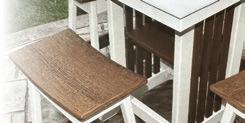










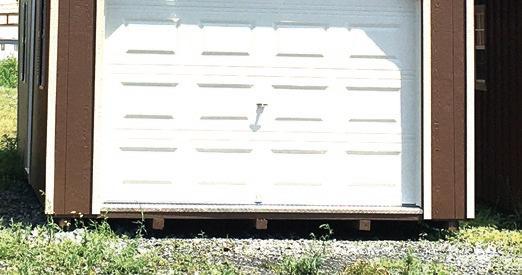

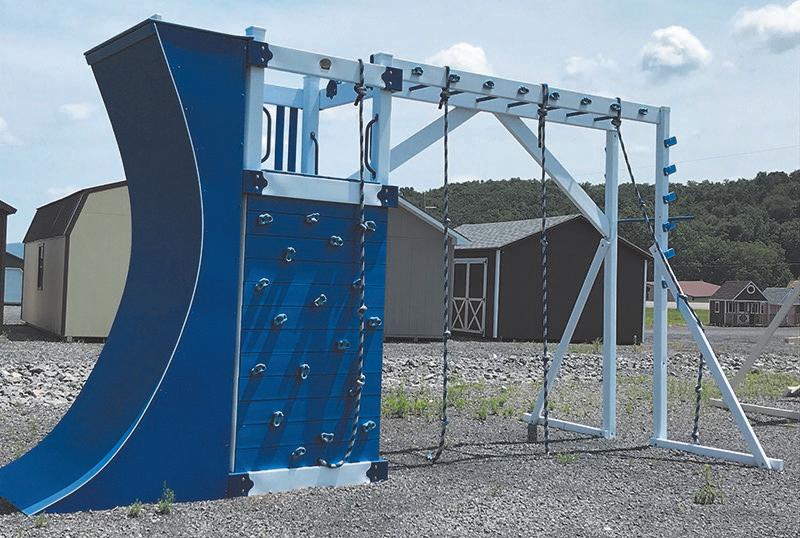









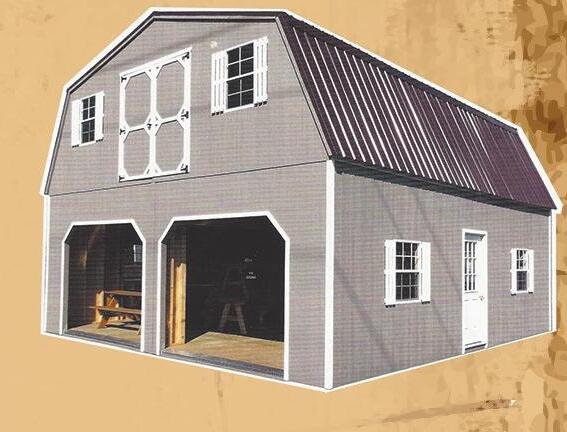

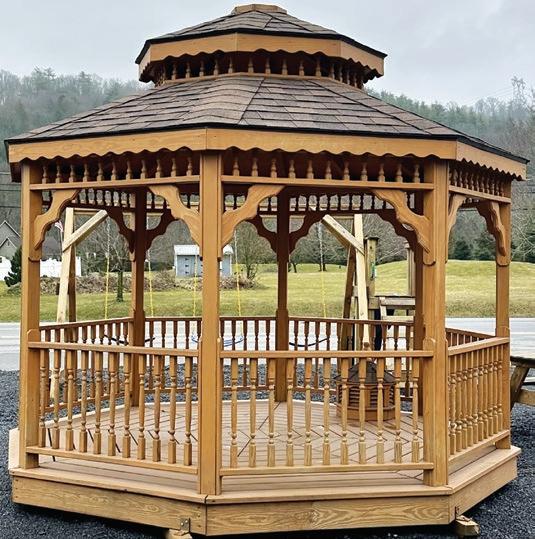

When the sun is shining and the weather is warm, who doesn’t want to be outside enjoying all Mother Nature has to offer? The great outdoors often beckons, but it also has bugs. Insects, particularly nuisance bugs like mosquitoes or biting flies, are unwanted visitors when enjoying the great outdoors. Weather also can put a damper on outdoor plans. It’s challenging to get fresh air and enjoy the yard when it’s raining or conditions are especially humid. Instead of limiting time spent outdoors to those occasions when conditions are favorable, homeowners can install Florida rooms to maximize

their outdoor living potential.
The term “Florida room” calls to mind different things. Some define it as a walled extension of a home that features a roof — such
as a covered patio, or lanai.
According to Tripod Aluminum, Inc., a manufacturer of aluminum building products, a Florida room also may be a screened-in enclosure that surrounds a
pool area and is designed to keep bugs and wildlife out of the water. People also may consider a Florida room a sunroom, and it may be screened or feature actual windows that can be opened, according to the resource from Farmhouse to Florida.
Those thinking about renovating to include Florida rooms can consider the following details.
- You don’t need to live in Florida. Florida rooms may be most associated with the Sunshine State, but you don’t need to live there to have one. Consider your climate and build a Florida room that will meet your needs. Do you want to enjoy
the space year-round? If so, you might need some sort of heating or cooling to keep things comfortable.
- Decide on the right location. While Florida rooms traditionally are in the backyard, select a spot that works for you. If you want to maximize morning sunrises, for example, locate the room on the side of the home that faces east. If a view from another side of the house is particularly striking, place the Florida room there.
- Determine your needs. Will you be cooking or entertaining in the Florida room? If so, design a space that will feature cooking and eating areas. Ensure plenty

of ventilation for a grill, and consider other appliances to reduce the need to make trips into the house. Although the Florida room creates some measure of weather protection, choose furniture and fixtures that can stand up to outdoor conditions.
- Add privacy as needed. Curtains, greenery, shades, and other details can create privacy when you don’t want to be visible to neighbors.
Florida rooms add useful space to a home and can help residents connect with nature even when conditions outside are less inviting.
Much changes for the better when pets are brought into a household. When a pet joins the family, members now have a companion to enthusiastically greet them when they return home from work or school.
Pets require attention and routine vet visits to stay healthy. Homeowners may need to assess their living areas to ensure that the spaces are as safe as possible for new pets, as there are many potential hazards around the typical
home. Unfortunately, those hazards may not be obvious to new pet owners. The following are just a handful of potential pet hazards in a typical home.
Kitchens can be tricky spaces for pets.
Cleaners that contain chemicals tend to be stored in kitchens, where hot appliances are periodically on as well. The kitchen also is where people prepare food, including some that could be unsafe for
pets. Many foods that are safe for people are not safe for pets, and these include:
- Alcoholic beverages
- Avocado
- Caffeine
- Chocolate
- Fatty foods
- Garlic
- Grapes and raisins
- Onions
- Xylitol (a sweetener)
Chemical products
Chemical products may be unsafe to use around pets. It’s important to read labels


and use products accordingly.
- Bleach
- Phenols
- Cleaning products (use all with caution)
- Antifreeze
- Lawn fertilizers
- Ice melt
- Mothballs
- Liquid potpourri
- Paints and solvents
- Fabric softener sheets
- Pest baits
-Swimming pool chemicals
Plants and flowers
While they may be
natural and beautiful, plants and flowers can potentially prove hazardous to pets. The level of toxicity may vary depending on the animal that consumes the plant.
-Almond, apricot, cherry, nectarine, peach, and plum trees
- Aloe Vera
- Chrysanthemum
- Cyclamen
- English ivy
- Foxglove
- Hibiscus
- Hydrangea
- Oleander
- Poinsettia
Additional hazards
- Ovens, gas or electric burners
- Corded appliances
- Candles
- Ornaments and glass items
- Laundry (ingested socks or other items can cause obstructions)
- Small toys
Caution is necessary when welcoming pets into a home, as a typical living space contains numerous items that can prove harmful to animals.









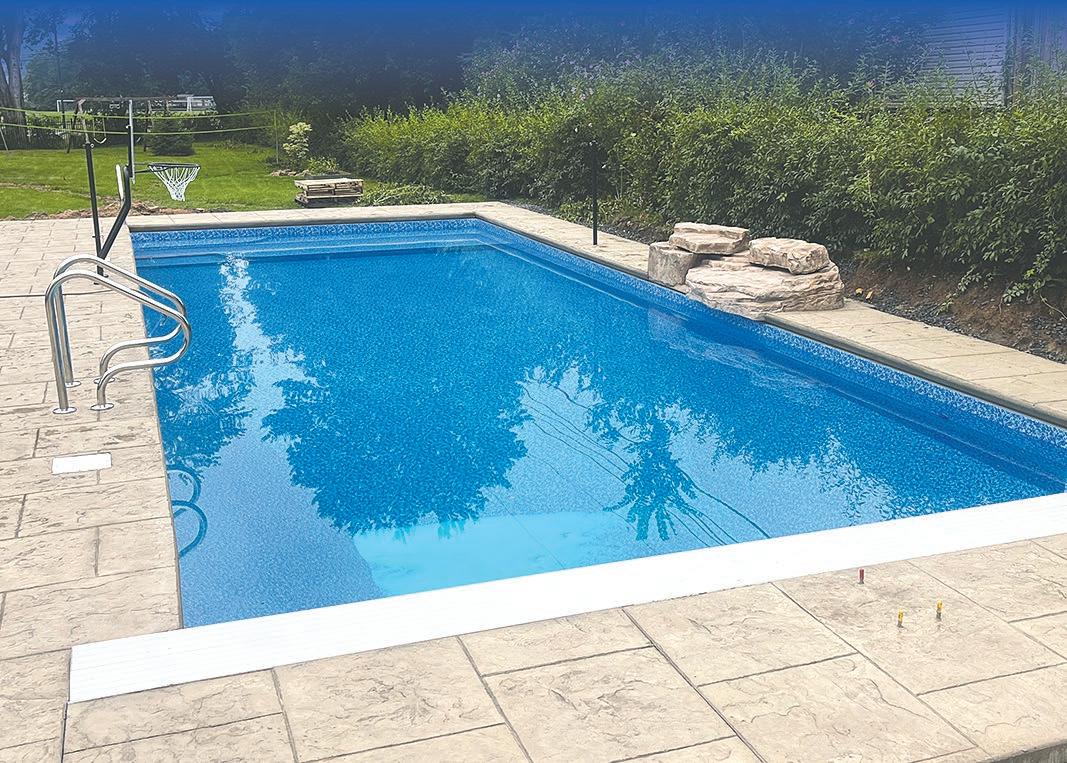





Fresh air and sunshine can do wonders for the body and even the soul. People realize this, which is why outdoor activity is encouraged; staying indoors all the time can quickly sap energy levels and diminish mood.
What is good for human beings also may be good for pets — within reason, of course. Domestic companion animals can benefit from time in the great outdoors. It provides them new sights and sounds, opportunities to explore, and new ways to exercise. Their owners just need to take precautions to make outdoor ventures safe for domesticated animals. The good news is there are steps to make time outdoors safer for pets.
Those who have the benefit of a yard will want to fence it in. Fences stop pets from running away, and they can limit the probability that predators will get inside the yard.
The yard should routinely be inspected for dangers, including poisonous plants (poison ivy, mushrooms) that pets may ingest, as well as other hazards.
A pet door can provide convenient access to the outdoors when pets would like to get outside. Doors can be purchased with radio-signal locks that will disengage when a pet wearing an electric collar tries to go through; otherwise, the door stays closed for security reasons.
Work with your veterinarian to get a prescription for parasite preventatives. This includes flea and tick medication and worm medication. Pets may get heartworms from the bites of mosquitoes. Therefore, limit the number of mosquitoes on your property by draining standing water and potentially using repellents if mosquitoes are a nuisance.
Pets will need ways to cool off or warm up when spending time outdoors. Extreme heat or cold could be dangerous, so avoid having pets spend prolonged periods of time outside if the weather is especially harsh.
Pets should not be left entirely to their own devices outdoors. Fences may keep some predators out, but those that can fly or climb (or burrow) can make it inside. Keep tabs on pets while they are outside. Do not keep a dog tied up for a while, as the animal may get tangled and choke.
Walks around the neighborhood are made much safer with the use of leashes, or leads as they are sometimes called. A leash enables pet owners to restrain their pets if need be and prevent them from running loose and getting lost.
Antifreeze, oil and even discarded trash can be dangerous to pets if ingested. Pet owners need to exercise caution on walks.
Certain retailers have relaxed their policies about letting pets inside. Others have not but seemingly turn a blind eye when pets come inside. By and large, only certified service animals are
legally allowed to be in most retail stores. Bringing an “emotional support animal” or another pet in the store can compromise the ability of trained animals to properly provide care because they may become distracted by other pets. Non-service animals also may become injured by shopping carts or get under feet of shoppers if they are not properly leashtrained.
Pet owners can safeguard domesticated animals and pets in various ways when spending time outdoors.

























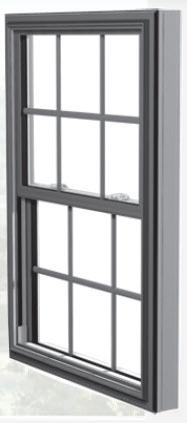












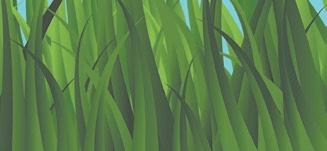









The decision to replace windows often comes down to aesthetics and necessity. Drafty windows can reduce energy efficiency in a home, requiring HVAC systems to work harder to keep interiors comfortable. The harder the HVAC must work, the more homeowners will pay in energy costs.
Old windows also may be points of entry for water and insects. Despite the importance of windows, Money magazine advises that new windows make up only a fraction of the home’s total exterior “envelope,” resulting in only about 5 to 15 percent of total energy savings.
But there are still plenty of reasons to invest in new windows.
1. Vinyl or aluminum may be best. Lumber is farmed rather quickly today and solid wood products may not stand up to elements as well as wood used a half-century ago. To avoid rot, vinyl windows often are an affordable and durable choice. Homeowners also have the option of wood windows with aluminum cladding, which are long-lasting.
2. Moisture problems indicate windows need to be replaced. Condensation that shows up as fogging between double-pane windows or on the inside of windows indicates that the windows are starting
to fail. If installing a vapor barrier in the basement or crawl space, ventilating properly when showering or cooking, or using a dehumidifier indoors does not remedy the situation, it might be time to replace windows.
3. Windows add curb appeal. Beyond functionality, replacement windows immediately update the look of the home and can improve curb appeal since they are one of the most prominent features on the exterior of a home. If a house needs an update, replacing windows and can be a quick and affordable update.
4. Consider other energy-efficient upgrades. Sometimes older windows can be salvaged, especially if they are not damaged and only moderately drafty. Replacing panes, sash cords, weather stripping, and even glazing may be less expensive than replacing a window. Plus, older homes with attractive windows complement one another. To keep energy bills down, think about adding insulation to the attic and basement — which is a good idea even if you are replacing windows.
5. The wrong windows can adversely affect home value. The National Association of Realtors says homeowners get about 73 percent of their replace-

ment window investment back when they resell a home. But choosing the wrong windows might lower the value of the home.
It’s important to match the look of the original windows, including window material and the divided light pattern (the number of panes in each window) with the original windows.
6. Think about soundproofing, too. When upgrading windows, also think about how certain windows can cancel out noises and make homes more soundproof. Some windows can help reduce outdoor distractions like leaf blowers or lawn mowers.

7. Proper installation is key to longevity. Replacement windows are only as good as their installation in many cases. Poor installation and orders of standard rather than custom sized windows could result in poor fitting and seals. Homeowners should carefully vet and review window replacement contractors to find the best professionals for the job.


When planning a landscape, it’s tempting to pick the most colorful, vibrant plants. An eye-popping property filled with yellows, purples, pinks, and other bold colors is sure to catch anyone’s eye. However, the right plant for a property is not always the most colorful.
Gardening novices can easily be overwhelmed on a trip to their local garden center, where employees may ask a host of questions that have little to do with homeowners’ preferences and everything to do with the growing conditions around their properties. Those questions may seem a little intense, but they’re well-intentioned. Successful gardening is more about soil conditions and access to sunlight than it is about the plants themselves. An awe-inspiring hydrangea bush will only impress if it’s planted in a location where it can thrive.
The Landscape, Nursery and Urban Forestry program at UMass Amherst Extension advises homeowners to learn about the following site conditions, and ulti-
mately share that knowledge with local garden center representatives, before they pick and plant anything around their properties.
- Hardiness zone: The Plant Hardiness Zone Map from the U.S. Department of Agriculture is designed to help gardeners determine which plants are most likely to thrive where they live.
The map can be found on the USDA website at www. usda.gov.
- Light availability, intensity, and duration, from full sun to deep shade: Prior to planting, homeowners can document this information in a notebook or on their smartphones. Do so for a long enough period of time that you can get an accurate of idea of the conditions in which plants will have to grow, and then take that information with you to the garden center where you will buy your plants. Employees can then use this info to help you find the right fit given the light conditions.
- Water availability, both quantity and quality, as well as ease of access
- Exposure to wind and temperature extremes

- Exposure to weather events, snow loads, erosion, and flooding: Garden center employees can likely recommend plants based on traditional weather patterns in a given area.
- Soil type, drainage and compaction: Homeowners can take note of any areas of their property where water pools or the ground feels especially soggy after rainfall. Share this information with garden center employees prior to picking plants for such areas. If soil appears compacted, aeration prior to planting may be necessary.
- Competition from existing vegetation, keeping in mind the roots underground that you can’t see
- Above ground wires or obstructions: Trees will grow up, and the presence of power lines or other obstructions may threaten the trees or prove dangerous if trees eventually grow into or hang over power lines.
Knowledge of various conditions prior to planting can save homeowners the cost of replacing plants and the hassle of dealing with plants that don’t take.
Contractors perform important work for millions of homeowners every day. Home improvement projects are complicated undertakings, and the experience of skilled contractors can ensure jobs are completed on time and within homeowners’ budgets.
Homeowners have undoubtedly heard horror stories from neighbors about projects that have gone awry. Projects can go sideways for a number of reasons, but a skilled contractor can help homeowners navigate such situations successfully. That underscores how important
it can be to find the right professional for the job. The following are some tips homeowners can consider as they look to hire a contractor.
- Identify which professional you need. Some contractors are of the jack-ofall-trades variety, but many specialize in a particular line of work. It’s important that homeowners identify which type of contractor they should work with prior to starting a project. This requires homeowners to define the goal of the project (i.e., new wood floor installation), which can serve as a springboard
into finding the right type of contractor.
- Prioritize building safety. Safety should be the utmost priority for homeowners and contractors alike. Prior to hiring a contractor, homeowners should identify any safety restrictions that might be enforced by local governments and take note of all the permits necessary to get a job done. Homeowners can then discuss those restrictions and permits as they interview contractors. Projects that do not adhere to code are illegal and can compromise homeowners’ ability to sell their homes
in the future. So it’s vital to work with contractors who are familiar with local codes and aware of which permits are necessary to ensure a project can go forward.
- Insist on written estimates. Handshake agreements offer no protection to homeowners or contractors, so estimates indicating what will be done and how much the project will cost should be provided. Homeowners should insist on receiving written estimates and interpret an unwillingness to provide one as a significant red flag.
- Know your rights.
Laws vary by region, but in general homeowners have a right to a written contract and contractors are obligated to provide a copy of that contract signed by both parties. That contract must be provided prior to the start of the project. The contract should provide a detailed account of the work that will be done, as well as a timeline indicating important dates that components of the project will begin and be completed. The contract also should detail materials and who is providing them. Details regarding payments, guarantees and warranties
also should be cited.
- Do not pay in cash. Some contractors may suggest that the project will cost less if they’re paid in cash. However, home improvements should never be cash transactions. Cash does not indicate proof of payment, which can be problematic if a dispute arises.
Contractors help homeowners turn dream projects into reality. Homeowners can employ various strategies to ensure they find the right professional for their home improvement project.






Homeowners know it can be tempting to go the do-it-yourself (DIY) route when starting a home improvement project. Home repairs and renovations can be costly, and the notion of saving money on such projects compels many homeowners to try their hand at home improvements. However, the DIY approach can be costly as well, and if things go awry, homeowners may end up with empty pockets and unfinished projects.
Online tutorials and advertisements for home improvement retailers can make DIY seem like a snap. However, there are potential pitfalls to consider that could make the ostensibly less expensive DIY route far more detrimental to the bottom line than homeowners may recognize.
- Permits: Permits ensure work is done in accordance with local codes, which are designed to ensure the safety of residents and their neighbors. Licensed contractors know which permits are necessary for projects they’re hired to work on, and many even procure permits for their clients (homeowners are urged to read estimates and contracts to determine who will be responsible for acquiring the appropriate permits). DIYers may not know about local permits, and therefore go ahead with projects without procuring any. That can be harmful in the short- and long-term. In
the short-term, a failure to procure the appropriate permits can make a home less safe and potentially lead to costly fines and necessitate a complete do-over of the project. In the long-term, homeowners who did not secure the appropriate permits may not be given a certificate of occupancy (CO) when putting their homes on the market, which can make it very difficult to sell the home.
- Ancillary costs: The ancillary costs of DIY are not often noted in online tutorials. However, such costs can dramatically increase the amount of money DIYers shell out in order to complete projects on their own. Ancillary costs include but are not limited to the price of tools and equipment; disposal fees for materials that will need to be discarded; and the cost of permits. These costs are often included in estimates provided by contractors, but they’re easily overlooked by novice DIYers.
- Repairs: Even experienced contractors make mistakes, so DIYers, particularly novices, can anticipate making a few errors along the way. Minor mistakes may not prove too costly, but more significant mishaps can quickly negate any cost savings associated with DIY renovations. The cost to fix DIY mistakes varies depending on the project, but a 2019 survey from Porch.com found that the average DIY mistake cost home-
owners $310 and added five and a half hours to the overall time spent to complete a project. It’s worth noting the Porch. com survey was conducted prior to the dramatic increase in materials costs related to inflation in recent years. So it’s reasonable to assume that fixing DIY mistakes in 2024 could end up costing considerably more than a few hundred dollars. Before diving in to DIY, homeowners may want to consider the real costs associated with forgoing professional experience in the potentially misplaced hopes of saving a few dollars.

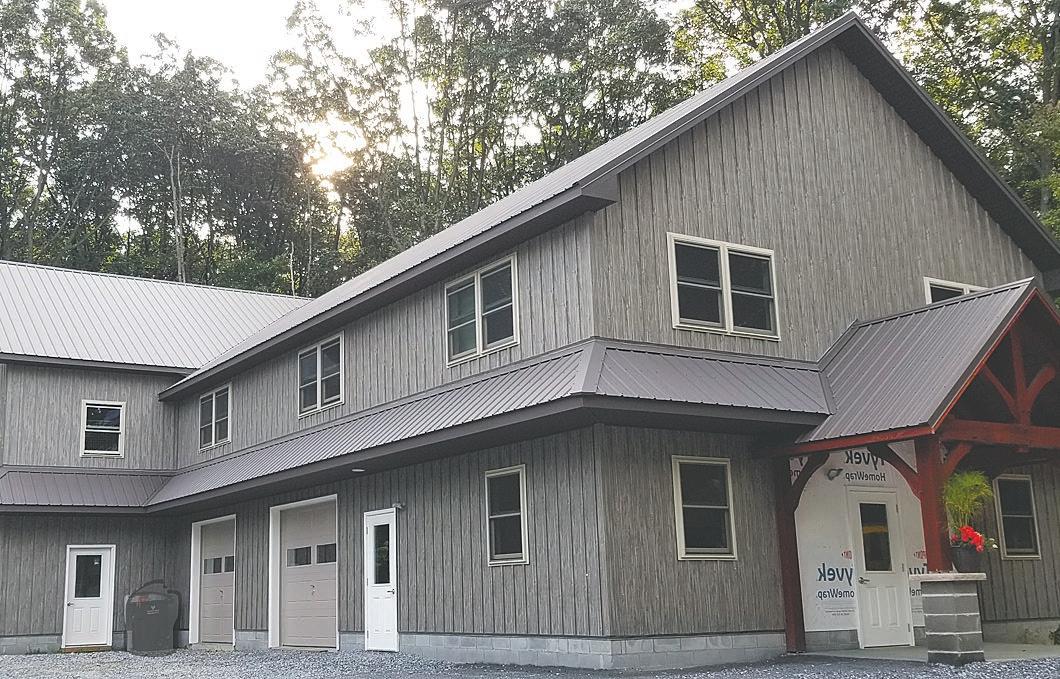


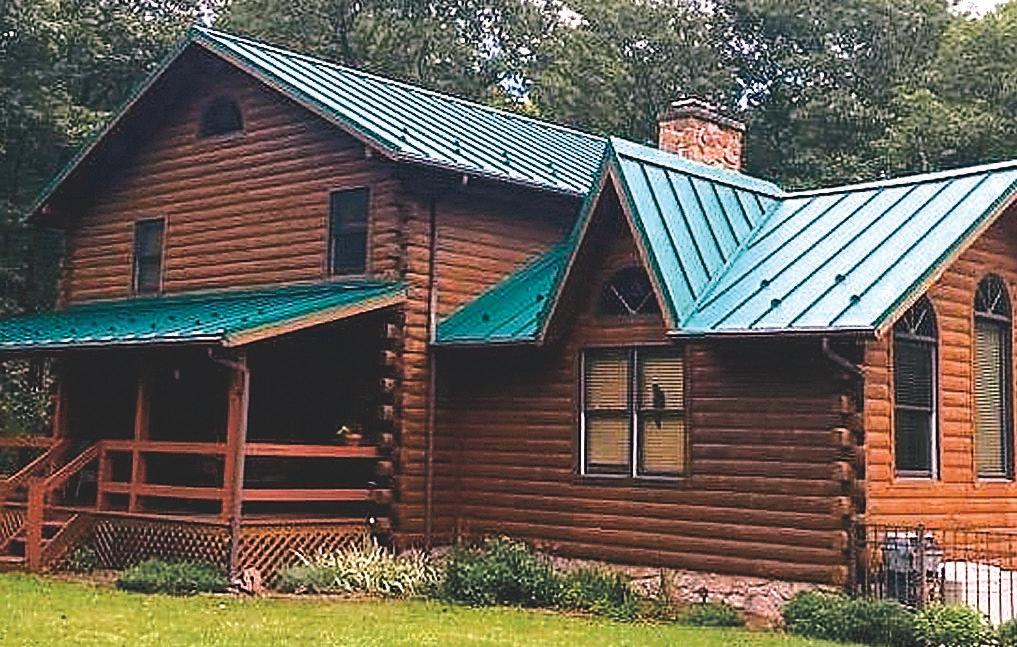












(NAPSI)—Keeping horses safe and comfortable is the No. 1 priority when constructing a new equestrian barn. But owners also want a stylish and functional building that is durable and can withstand the demands of housing their equine companions.
To help ensure the building will meet the needs of horse owners and their animals, Dennis Lee, equestrian product line manager at Morton Buildings, shares design recommendations.
Be realistic about future needs—In determining barn size, don’t limit the building dimensions based on how many horses you have now. That number may increase as your family or equestrian activities expand. “For example, build a six-stall barn and finish only two stalls now, and use the remaining space for storage,” Lee says.
“It will be far more cost-effective to finish additional stalls later rather than having to expand the barn.”
Think about utilities— New barn owners often underestimate their lighting, electrical and water needs. Wash stalls should include two lights to minimize shadows under the horse. Switched outlets for stall fans, weatherproof outlets to run a set of clippers or possibly veterinary equipment, and electric baseboard heat in the feed room to keep feed warm and dry are all popular features. Don’t for-

get the exterior lights. In the wintertime, when daylight hours are short, you will appreciate having ample outdoor lighting.
Consider your horse management style—Some owners like to leave their animals in the pasture during the daytime; others prefer the convenience of having Dutch doors that give horses access to outdoor paddocks from their stalls. How you intend to manage your horses will have a direct bearing on the barn design.
Plan for the right stall sizes—Consider not only the type of horses you own today, but also those you may have in the future. A 10-by-10-foot stall may be fine now for a child’s pony, but perhaps not for the larger horse they want when they’re older. “It’s far better to have a smaller horse in a large stall than trying to confine a large animal in a stall that’s too small. Small stalls are not only unsafe and uncomfortable—they can also drastically affect the future resale value of your property,” Lee explains.
Ensure good ventilation—Lee notes that windows and doors alone may not be sufficient ventilation to address the ammonia formed as urine breaks down. Installing stall fans can be more effective in moving air down into the stalls and creating airflow through the center of the barn compared to just opening windows and doors. Ventilated cupolas or ridge caps in conjunction with ventilated overhangs are also recommended.
Plan for floor comfort and safety—Equipping stalls with dense rubber mats, 1.5 inches thick, on top of well-compacted stone screenings or an ag-lime base will provide comfort while also helping to prevent slips and falls for people and animals. “Stall mats make the stalls much easier to clean and will help prevent hollowing out over time,” Lee says. “In other areas of the barn with a concrete surface, use a textured finish instead of a trowel finish, which can be slippery when wet. Rub-
ber mats in the wash stall are also a great idea.”
Consider functional aesthetics—Lee adds that design features such as cupolas and wainscots can give visual appeal to a new barn. A diamond M door with a fixed window for the top half lets you work in the barn and still keep an eye on what’s going on outside. Ceiling skylights or translucent sidelights installed at the top of barn walls will allow more light into the building.









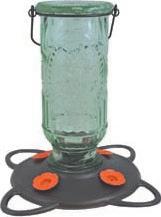







Gardening is a rewarding hobby that pays a host of significant dividends. Many people love gardening because it allows them to spend time outdoors, and that simple pleasure is indeed a notable benefit of working in a garden. But the National Initiative for Consumer Horticulture notes that gardening provides a host of additional benefits, including helping people get sufficient levels of exercise, reduce stress and improve mood.
With so much to gain from gardening, it’s no wonder people look forward to getting their hands dirty in the garden each spring. As the weather warms up, consider these tips to help bring a garden back to life.
• Discard the dead weight. Winter can take its toll on a garden, even in regions where the weather between December and early spring is not especially harsh. Discard dead plants that have lingered into spring and prune any perennials that need it. Branches that fell during winter storms also should be removed at this point if they have not previously been discarded.
• Test the soil. Soil testing kits can be purchased at local garden centers and home improvement retailers. Such tests are inexpensive and can reveal if the soil needs to be amended to help plants thrive in the months to come.
• Mulch garden beds. Mulching benefits a garden by helping soil retain moisture and preventing the growth of weeds. Various garden experts note that mulching in spring can prevent weed seeds from germinating over the course of spring and summer. That means plants won’t have
to fight with weeds for water when the temperature warms up. It also means gardeners won’t have to spend time pulling weeds this summer.
• Inspect your irrigation system. Homeowners with in-ground irrigation systems
or above-ground systems that utilize a drip or soaker function can inspect the systems before plants begin to bloom. Damaged sprinkler heads or torn lines can deprive plants of water they will need to bloom and ultimately thrive
once the weather warms up.
• Tune up your tools. Gardening tools have likely been sitting around gathering dust since fall. Serious gardeners know that tools can be expensive, so it pays to protect that investment by maintaining the
tools. Sharpened pruners help make plants less vulnerable to infestation and infection.
Well-maintained tools like shovels and hoes also make more demanding gardening jobs a little bit easier, so don’t forget to tune up your tools
before the weather warms up.
It’s almost gardening season, which means gardeners can start on the necessary prep work to ensure their gardens grow in strong and beautiful this spring.















(NAPSI)—Storms can strike at any time, so having the right outdoor power equipment on hand and keeping safety in mind is important, says the Outdoor Power Equipment Institute (OPEI). Home and business owners should think ahead, says OPEI, before foul weather or a power outage occurs.
“Any season can be storm season,” says Kris Kiser, President & CEO of OPEI, an international trade association representing manufacturers and suppliers of outdoor power equipment, small engines, battery power systems, portable generators, utility and personal transport vehicles, and golf cars. “It’s smart to invest in portable and whole house generators and to have other outdoor power equipment on hand such as chainsaws and water pumps to mitigate any damage from felled trees and water damage and floods.”
He notes that outdoor power equipment is evolving. “There’s a power source for every need including battery/electric, propane, solar and gasoline,” he says, noting each has different maintenance and care requirements. “It’s important that you know how to safely operate your equipment. And, remember, always read and follow the manufacturer’s manual and never disable safety features.”
To get ready for inclement weather, homeowners
should follow these tips.
One, identify which equipment is needed before a storm. Chainsaws or pole saws can trim limbs and shrubs ahead of a storm and handle clearing. String trimmers, pruners and chainsaws can remove combustible material from around your home, making it less vulnerable to wildfires.
A portable generator powers key appliances and charges cell phones when utilities go down. A whole house generator can keep the lights and appliances on and running. Before an outage, plan where the generator will be set up (never in a home or garage, and always away from your home and any air intake) and determine how to secure it if needed. Buy and install a carbon monoxide detector. Get outdoor-rated extension cords for portable generators and consider adding an approved generator cover for rainy weather.
Water pumps can get water and muck out of basements and homes. Be sure you know how to operate the pump. Never pump substances that your equipment is not designed to cope with. Pay attention to avoid overheating and follow all safety precautions.
A utility type vehicle can transport people and supplies quickly in an emergency. Keep the vehicle stable and drive slowly. Do not turn mid-slope or while on a
hill. Consider taking a UTV safety course.
Two, always read and follow the safety and usage recommendations provided by outdoor power equipment manufacturers. Never disable safety features. Practice how to operate equipment before you need it—not until an emergency is at hand. Follow all recommended safety measures on the product as well as in the owner’s manual.
Three, have the right fuel on hand and charge batteries ahead of an outage. Most gasoline-powered equipment uses E10 or less fuel and most manufacturers recommend adding a fuel stabilizer. Fuel that is more than 30 days old may phase separate and cause running problems, so it’s important to purchase fuel just ahead of a storm. Store fuel safely and use only an approved fuel container, and only manufacturer-recommended batteries.
Four, pay attention to your energy level and health. Preparation for bad weather, a power outage and storm cleanup can be taxing. Do not operate power equipment when tired or overly fatigued. Drink plenty of water and take regular breaks. Always use safety equipment like chaps, gloves, eye protection and hearing protection.
Five, always keep children and pets away from operating outdoor power equipment.










No homeowner wants pests to invade their homes or their yards. However, it’s easy for pests to find their way into and around a home. In fact, certain conditions may be inviting pests to a property.
- Garbage: Piles of garbage offer food and shelter to pests. Removing garbage piles and cleaning up food waste promptly can make a difference.
- Stagnant water: Mosquitoes breed in standing water, which is water not affected by waves, current or a filtration system. Anywhere wa-
ter has pooled, mosquitoes may be breeding.
- Moisture or standing water: Additional sources of water and moisture may attract pests like gnats, mosquitoes, stink bugs, and certain spiders. Damp areas are of particular concern, especially when combined with darkness.
- Firewood: Firewood may attract a variety of pests, including termites and weevils. Firewood also may contain eggs that were laid before trees were cut down. If firewood is needed, it should be stacked far away
from a home.
- Clogged gutters: Ignoring clogged gutters can lead to pest problems. Mice, squirrels, birds, ants, and spiders may be attracted to damp leaves in clogged gutters. Leaves offer shelter, nesting material and possible food sources of insect life.
- Dirty dishes and indoor trash: Leaving food-covered dishes in the sink invites pests. Leftover food attracts cockroaches, flies, ants, and more. Even if time is short, it’s best to wash dishes or load them into the dishwash-
er. Overflowing trash also draws pests into a home.
- Clutter: Clutter provides hiding places for all sorts of rodents and insects, which can hide out in cluttered areas and remain comfortable. Going room to room and clearing out extraneous items may help reduce pest populations. Focus on the garage and basement, in particular.
Pests are attracted to certain conditions, and remedying these issues can help reduce pest infestations.


Backyards are ideal places to spend warm afternoons soaking up some sun. Lazy days in the yard are a big part of what makes warm weather seasons like spring and summer so appealing. But those afternoons can quickly go off the rails when an unwelcome visitor makes its presence known.
Ticks can be found throughout the world, but the Centers for Disease Control and Prevention notes that only a select few types of ticks transmit bacteria, viruses and parasites, or pathogens, that cause diseases in people. But even if the number of tick species that transmit diseases to humans is relatively low, ticks that can infect humans are a notable threat. Such
ticks carry pathogens that the CDC notes can cause a number of diseases, including Bourbon virus, Ehrlichiosis and, of course, Lyme disease, among others.
Human beings can come into contact with ticks in their own backyards. But humans can take various steps to make their lawns less welcoming to ticks.
• Cut your grass short and keep it that way. Blacklegged ticks are transmitters of Lyme disease, which the CDC notes is the most common vector-borne disease in the United States. Lyme disease also poses a growing threat in Canada, where data from the Public Health Agency indicates human-reported Lyme disease
cases increased fromm 144 in 2009 to more than 2,100 in 2022. Black-legged ticks do not like environments that
have let their grass grow a little too high (around five or six inches) to bag their clippings when cutting the grass. Lots of

are dry and hot, so short grass makes lawns less attractive to this type of tick. Consumer Reports advises homeowners who
clippings on the grass can provide a respite from the heat for black-legged ticks.
• Create a tick barrier if


your property abuts woods. Woods provide a cover from summer heat that black-legged ticks crave. So properties that abut the woods may be more vulnerable to these unwanted guests than yards that do not border woodlands. A barrier of dry mulch made of wood chips between a property and a bordering wooded area can help repel ticks, who won’t want to settle in often dry, hot mulch beds.
• Plant with infestation prevention in mind. Some plants can help to repel ticks because they boast certain characteristics that ticks cannot tolerate. The fragrances, textures and oils of plants like garlic, mint, lavender, marigolds, and
others create less welcoming conditions for ticks. Homeowners can speak with local garden centers for advice on tick-repellant plants that can thrive in their particular climate and on their properties.
• Remove yard debris. Piles of wood, leaves and brush can make for good conditions for ticks that transmit disease. After raking leaves and gathering brush, discard the resulting piles immediately. These measures will not necessarily prevent all ticks from establishing themselves on a property, so individuals are urged to inspect their bodies and the bodies of their pets after a day in the yard.
Stephen Alexander Owner


Summer and backyarding—the act of taking our indoor life outside—go hand in hand. This time of year, the backyard beckons for entertaining, working, exercising, relaxing, and reconnecting. But those looking to make improvements to their family yard for even more family fun this summer need to avoid some common backyard renovation mistakes.
“Mulligan the TurfMutt and I recently moved into a new home, and we were reminded about some of the backyard renovation pitfalls that can be easy to fall into,” said Kris Kiser, President & CEO of the TurfMutt Foundation, which encourages
people to care for and use their outdoor spaces. “By keeping a few basic principles in mind during backyard improvements, families can create a purposeful, dream yard for year-round outdoor living.”
Here are the top backyarding renovation mistakes to avoid, according to the TurfMutt Foundation:
Not considering your yard’s full potential. Your yard has the ability to safely and comfortably accommodate a range of functions for your family. From outdoor officing to al fresco dining and offering a place for kids to learn and grow as well as
work out their wiggles—your backyard has unlimited potential to expand your home’s living space.
Planting fake grass. Plastic grass offers none of the life-giving benefits of real grass—such as oxygen production, carbon sequestration, urban heat dissipation, or air pollution reduction. Real grass offers all these benefits, and it is easier on feet and paws. Also, real grass is a natural air conditioner.
Forgetting the “right plant, right place” rule. This is the “Golden Rule” of backyarding, but it’s more than just knowing which plants will thrive in sunny spots ver-




sus shaded areas. Selecting the right plants for your micro-climate and lifestyle will result in a living landscape that requires minimal upkeep on your part while offering maximum environmental benefits.
Not treating your yard like part of the connected ecosystem. Your yard links with other community green spaces to provide food and shelter for pollinators, such as birds, bees, butterflies, bats, and other creatures. Support pollinators and wildlife by planting a healthy balance of grasses, flowers, shrubs, and trees that thrive in your yard’s conditions and bloom at different times throughout the year.
Not utilizing community green spaces. Think of community parks, dog parks, green belts, and schoolyards as an expansion of your own backyard square footage. Not only do these community areas provide a change of scenery from your own backyard, they are particularly beneficial for those with little to no backyard space of their own.
For more information, sign up for Mutt Mail, a monthly e-newsletter with backyarding tips and all the news from the TurfMutt Foundation.
To learn more about creating the yard of your dreams, visit TurfMutt.com. Look for Mulligan the TurfMutt on the CBS Lucky Dog television show. You can also download the International Backyarding Fact Book, to learn why spending time in yards and community parks is good for people... and the planet.
Failing to keep safety in mind. Outdoor power equipment makes big backyarding projects easier, but it is critical to keep safety in mind. Read your owner’s manual and follow all manufacturer’s guidelines. Do not disable or alter any of the safety features. Always keep pets and children away from machinery during operation, and do not let children on or near lawn mowers at any time.





Nature enthusiasts are known to say that spending time in the great outdoors has a positive effect on their mental and physical well-being. Such an outlook is more than mere speculation, as it turns out spending time in nature provides a host of health benefits that might surprise even the most devoted outdoors enthusiasts.
and cognitive health
A 2010 study published in the American Journal of Alzheimer’s Disease & Other Dementias found that engaged persons with dementia in horticultural therapy-based (HT-based) programming solicited higher rates of participation than traditional activities (TA) programming. In addition, a separate 2013 study in the journal Dementia found that exposure to a therapeutic garden had a positive impact on quality of life for people with dementia. And it’s not just dementia patients who can experience the cognitive benefits of time spent in nature, as the Hagley Museum and Library reports that numerous studies have found exposure to nature improves cognitive function.
Nature and vitamin D
The potential health benefits of vitamin D are increasingly drawing the attention of medical researchers, and for good reason. According to the Harvard Medical School, recent research has suggested that vitamin D may offer added protection
against conditions such as osteoporosis, cancer, heart attack, stroke, and depression. Exposure to sunshine can help the body generate vitamin D, thus providing further reason to spend time in nature.
Given the aforementioned health benefits related to spending time in nature, it’s easy for even non-scientists to conclude that being outdoors has a profound impact on overall well-being. But non-scientists can rest assured that recent research has confirmed such conclusions. A 2019 study published in the journal Scientific Reports found that individuals who spent at least 120 minutes a week in nature were significantly more likely to report good health and psychological well-being than those who spent less time outdoors. Though the authors of the study cautioned that the exposure-response relationship was under-researched, and therefore likely needed to be studied more extensively, in the meantime individuals, after a consultation with their physicians and confirmation that it’s safe to get out more often, can aspire to spend at least 120 minutes in nature each week. The results may speak for themselves.
Nature has a lot to offer, and the benefits of spending more time outdoors may be even more significant than people recognize.







Spring is a season of rejuvenation that compels millions across the globe to quit hibernating and get back to enjoying the great outdoors. Spring also marks a great time to assess a home’s exterior, namely those areas like a deck where people will spend a lot of time in the warmer months to come.
Assessing a deck after winter can be eye-opening. Harsh winter weather can take its toll on a deck, and the following are some telltale signs that a deck could be in need of repair or replacement.
• Wobbly underfoot and in hand: Wobbly planks and railings are one sign of a deteriorating deck homeowners won’t recognize as they hide from winter weather indoors. But these tend to reveal themselves rather quickly when examining a deck after winter. Wobbly planks in the middle of the deck can be inconvenient, but wobbly steps and railings can be dangerous. According to the home improvement resource Angi, wobbly railings can be a byproduct of rot. A local decking professional can assess the extent of the rot in railings and elsewhere and determine the best course of action. If the rot is isolated to an area
or two, a simple repair may be all that’s necessary. Extensive rot may require a full replacement of the existing deck.
• Faded paint: Many homeowners paint their wood decks, and that paint will not last forever. Faded paint can turn an otherwise lovely deck into an eyesore, and paint can fade over the winter. Thankfully, a local painter can address a faded deck and may recommend some additional strategies to safeguard the deck against fading next winter and beyond.
• Holes in the wood: Many a homeowner has encountered curious-looking holes in their deck. This could be a sign of insect infestation. Termites, carpenter ants and carpenter bees are among the various types of insects that can bore holes through wood. Homeowners who notice holes throughout their deck are urged to call a deck professional and/or pest control firm to assess the holes and offer a solution. Though small issues may be addressed with repairs, a deck littered with holes caused by insects may need a full replacement.
• Rust: Wood decks may be made of wood, but they can still exhibit signs of rust,

namely in the nails and metal connectors that hold the deck together. If screws have rusted to the point where they are no longer holding the deck
together, a full-scale replacement could be in the cards, as the deck could have substantial structural damage. Like other issues that can reveal
themselves during a springtime inspection of the deck, rust necessitates a thorough examination by an experienced decking professional. Many people do not use their decks during winter, which only underscores the significance of a full deck inspection in spring.






Potential home buyers typically have lists of requirements they would like to find in a new home.
Although there are many features that are universally appreciated, certain elements may appeal to particular buyers more than others. For example, a swimming pool may be coveted by active families, but may not be as desirable to retirees looking for less upkeep.
Size is consideration that merits significant attention. The mantra “bigger is better” is well known, but homes with significant square footage may not be ideal for all buyers. “How much home do I really need?” is an important question for buyers to ask themselves before they embark on their home-buying journeys. Here’s how buyers can identify how much house they need.
How many occupants will be living in the home?
The first consideration in home size is the number of residents. Rocket Mortgage says a good rule of thumb is to give each person 600 square feet

of space. So that means a family of four would ideally live in a home that is 2,400 square feet, while a couple may be fine in a 1,200 square foot home.
Generally speaking, the more rooms in a home, the larger the house. Potential buyers should identify rooms they feel are essential. While formal dining rooms once were de rigueur, they largely fell out of favor in recent years in lieu of open floor plans. The more rooms you need, the larger a home should be.
It’s important to consider life changes on the horizon, and buyers should decide if they want to move as a result of those changes or if they want to set down strong roots and stay in one home. For example, a starter home may be perfect for newlyweds, but the space may be too tight when kids come along. Also, those who anticipate caring for a parent in the future may want a home that will accommodate an extra resident in
the years ahead.
The trend to live in very small houses has gained popularity in recent years. Many people have chosen to live with less and downsize to diminutive homes.
Most “tiny” homes are less than 400 square feet and are not much bigger than some owner’s suites in larger homes. There are merits to small homes, and that includes a small environmental impact, less clutter, financial advantages, and other perks like spending more time outdoors.
Sometimes how much house a person needs comes down to how much he or she can afford. Small homes tend to be less expensive than large ones. However, even small homes in urban areas or those close to the water or other attractive amenities could still cost quite a bit.
Housing size is a personal preference that potential buyers must consider when they are shopping around.







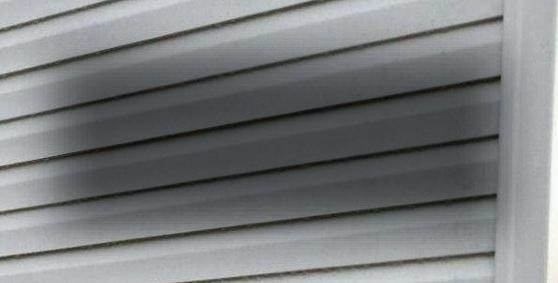
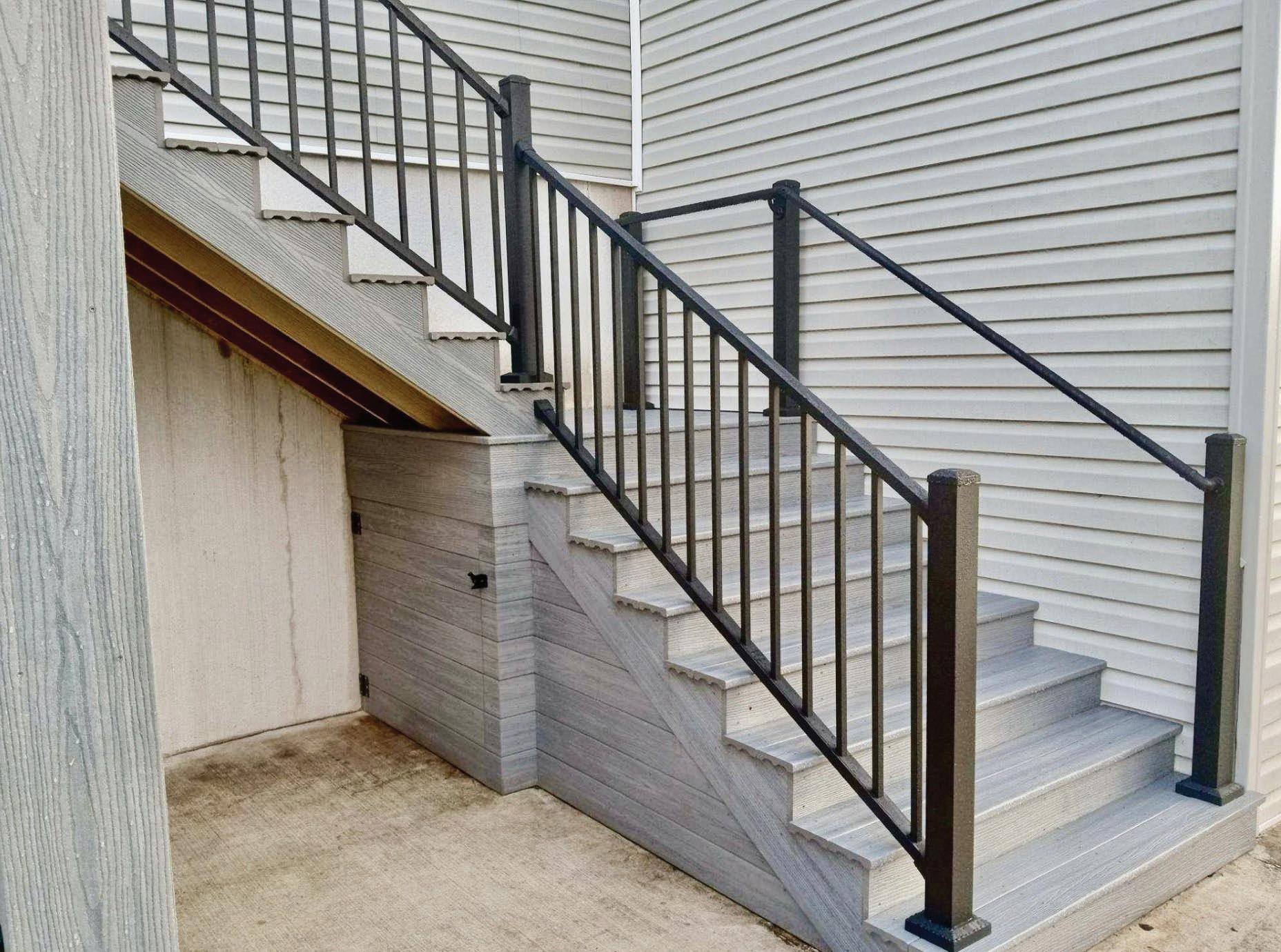


It can be bittersweet when adult children decide the time has come to move out of the family home. Parents perhaps get their first trial run of this scenario when their children go off to college or enlist in the military. Rooms are left empty, if only for a certain period of time. Eventually, those rooms will remain empty as adult children move out of the house for good.
Converting a child’s bedroom into an area for adults may take some planning. It can be exciting to regain space, but at the same time, it can be disheartening to convert a child’s bedroom once and for all. When the time comes and homeowners are emotionally ready to tackle bedroom conversions, these tips can help the process go smoothly.
- Repurpose the space for them. Give a childhood bedroom an adult spin without changing too much. If furniture is in good shape, replace the bedding, change the flooring, swap out artwork, and remove “youthful” items like toys, trophies and other collectibles. When the child comes home to visit, he or she will still feel comfortable in the space.
- Create extra storage.
The bedroom can be transformed into a walkin closet or dressing space. According to the design experts at Houzz, many clients request this type of dressing room situation. There’s a bonus if the layout allows the space to connect to the owner’s suite or bathroom. This is a major overhaul, so homeowners should enlist a professional contractor.
- Make a fitness center. A bedroom can be turned into a home gym to make working out more convenient. Homeowners should take inventory of equipment they may have and then figure out where existing and new equipment will go. They may need to consult a structural engineer to ensure that the flooring can bear the weight of additional equipment.
- Create a work space. One of the best ways to transform adult children’s bedrooms is to convert the spaces into home offices. Those who have been setting up “desks” at dining room tables or elsewhere may be excited about the prospects of finally having a private, dedicated space to work from home.
- Turn it into a craft room. The bedroom can
be converted into a space to explore hobbies and various other interests. A dedicated craft space, a reading nook, a place to store photography equipment, or another function can serve as a useful way to repurpose an empty bedroom.
Empty nesters have many possibilities when it comes to converting their children’s old bedrooms into adult spaces.
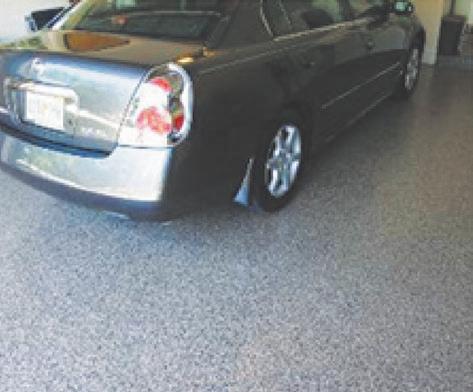













Pet preferences vary across the world, but dogs and cats are beloved companion animals in many corners of the globe. According to the 2022 Statista Global Consumer Survey, dogs have a good lead over their feline counterparts in the United States, mainland China, the United Kingdom, and Japan. However, in Germany, cats and dogs are kept by a nearly equal number of pet owners.
Even though cats may not be as popular as dogs, they are widely found in homes. They also may be spending time outside of homes. While there are plenty of feral cats, or those that have grown up outdoors with little to no social interaction with humans, even many domesticated cats spend ample time outdoors.
Most veterinarians feel it is safer to keep cats indoors, where they are not exposed to disease or trauma. However, many cats are simply not happy without fresh air. In such instances, here’s how pet parents can care for cats who need some breathing room.
The American Humane Society suggests leash-training cats that want to be outdoors. Much like having a dog on a leash prevents the pet from running off and getting lost or injured, cats who may be a little too independent for their own good can be curtailed with leashes.
Vaccinate and fix the animal
Cats that are exposed to the outdoors are more susceptible to diseases that can be harmful or even fatal. Speak with a vet about which vaccines the cat will require if he or she is going to be spending considerable time outdoors.
Also, while it is recommended for all companion animals to be spayed or neutered, it is especially important for those with access to the outdoors to prevent unwanted mating that can exacerbate overpopulation issues. Plus, animals that are fixed are less likely to roam or fight.
In addition to providing free access to the home by way of a cat door, outdoor access cats may benefit from a home in the yard. This can protect the cat from weather or other animals. A pet owner can build a shelter or purchase pre-made varieties that resemble a chicken coop. It’s also best to ensure
cats have access to fresh water while outside. Regularly inspect the shelter to keep it clean and in good repair.
Some cats will be satisfied with something that lets fresh air in without having to be completely outdoors. A “catio” is an outdoor ledge or enclosure for cats that is covered by grating or mesh, according to Habitat Have. It can be attached to a window or be freestanding in an area of the yard, providing a lounging spot that is outdoors but protected.
Cat caregivers can microchip cats and ensure they are wearing the proper identification. If the cat cannot find its way home, there is a greater chance the animal will be found if identification is present or a chip has been installed.
Although cats are safest indoors, with some precautions, cats can enjoy the fresh air and sunshine.



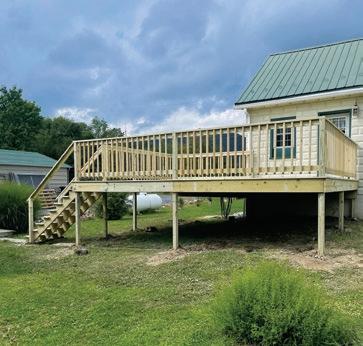



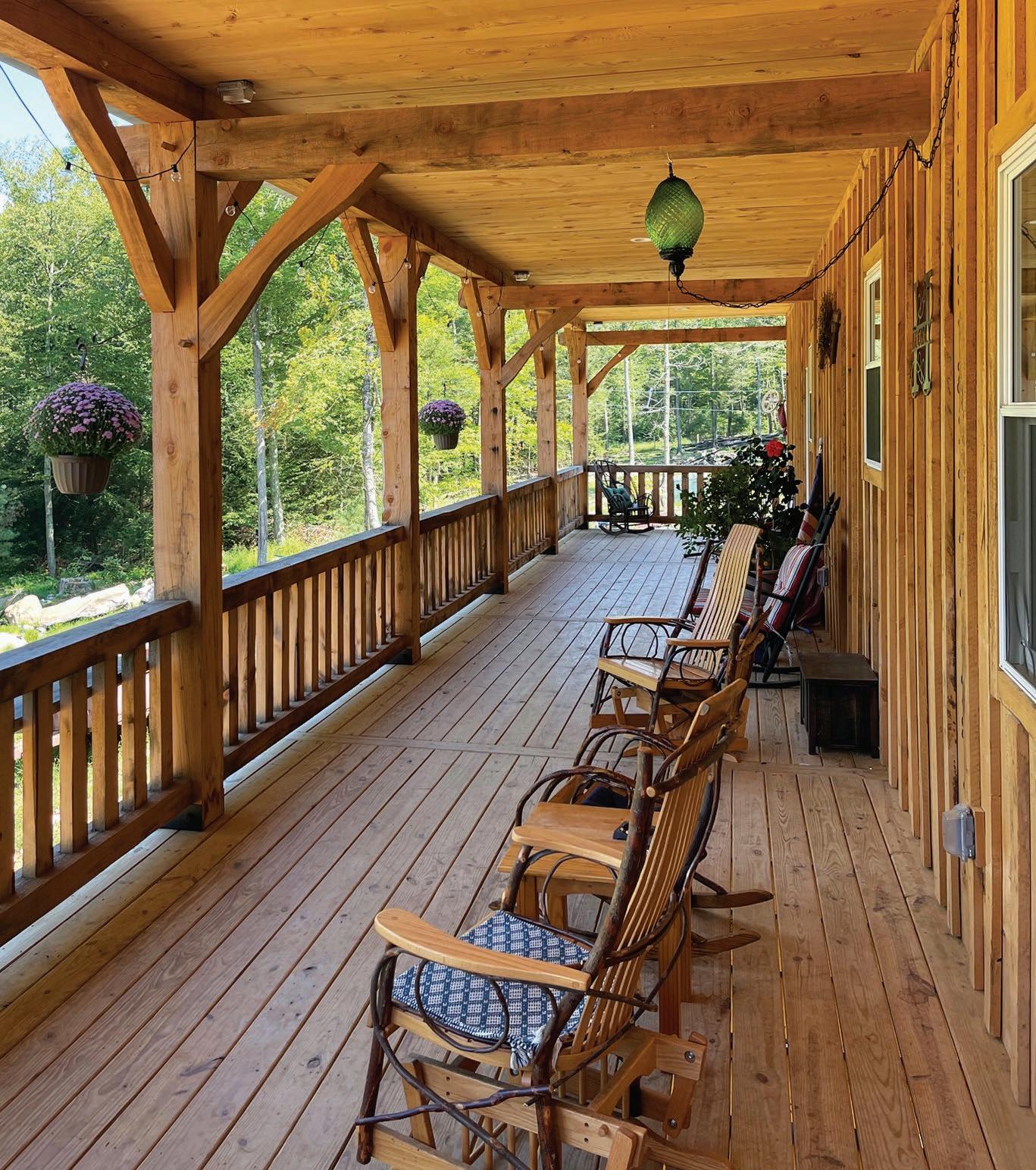
Inflation has garnered countless headlines in recent years, and much of that news has focused on the notably higher cost of food. Though the cost of some items at the grocery store has gone down in 2024, many items remain significantly more expensive than they were as recently as three or four years ago. In
an effort to overcome rising food costs, some consumers have thought about gardening. According to Washington State University, the average household with a food garden spends around $70 per year on seeds and garden supplies. The reward for that small investment is roughly $600 worth of food.
Though the financial investment associated with a food garden might be minimal, it’s important for prospective gardeners to recognize that the commitment of time required to establish and sustain a food garden can be significant.






The drip of a faucet, the bang of pipes and the visible signs of a leak under the sink are some notable indicators of plumbing problems. Other, potentially serious issues may not be so evident. How can homeowners tell if they have potential plumbing problems? The following are some sights and sounds that indicate it is time to call in a plumber.
• Banging or clanking: Plumbers refer to these noises as water hammer. This is when a rush of water forces through the pipe and bumps into a closed valve, producing a metal-















lic noise. Something is in the pipe that is restricting water flow. Over time, the flow of water meeting an obstacle could loosen pipe joints as the water tries to find an easier workaround.
• Pipe discoloration: If there is any sign of discoloration on pipes, particularly rust, it could be a symptom of a dripping sink or drain line that is slowly leaking. A slow leak can eventually turn into a big mess if left unattended.
• Sewer smells: Pipes need traps and vents. Traps are designed to prevent sewer gas from entering the home, while vents
channel sewer odor up to the roof. If there are sewer smells, it could mean a trap has dried out or a vent line is cracked, says Family Handyman.
• Low water pressure: If you turn on the faucet and the water pressure is poor, it could be the result of a clog or a leak somewhere in the system. Pipes that are improperly sized for a home also can affect pressure.
• Sluggish drains: Clearing drains is perhaps the only plumbing problem that homeowners should address themselves. More often than not, drains that
fail to drain quickly have a blockage such as hair or other debris. If attempts to clear the drain do not work, it is best to bring in a professional plumber.
• Shaking sounds: Water can cause occasional noises, but if the sounds are frequent, the pipes are not secured firmly enough. A plumber will need to tighten the mounting straps or even completely replace them.
Plumbing issues are nothing to take lightly, as small problems can quickly escalate and cause thousands of dollars in damage.
















































































































































































































Vibrant, green lawns can draw attention to any landscape. Many homeowners toil for hours each week to ensure their lawns are pristine, or invest in lawn care services to help maintain a yard if they do not have the time to do so themselves.
While many treatments can be applied to lawns to help them thrive, animal waste is not among them. Pet owners who aspire to have beautiful lawns will have to take a few extra steps to ensure lawns can persevere despite the presence of furry companions.
Reseed with a damage-resistant grass
There are many different types of grass, and some are more resilient than others. Tall fescue, Kentucky bluegrass, perennial ryegrass, and Bermuda grass are just some of the grass varieties that can capably handle pet traffic. If replacing the entire lawn is not possible, consider reseeding or addressing the areas that pets frequent.
Strengthen the root system
It may be tempting to cut the lawn short, particularly if dogs or cats like to nibble on longer blades of grass. But that approach could be doing the lawn a disservice. According to The Home Depot, letting the lawn grow to at least three inches will help keep moisture in the soil and prevent evaporation. That moisture will strengthen the roots, creating a healthier lawn for pets and people.
Create pet paths
Various materials can be used in these high-traffic
areas to minimize the sights and signs of pet traffic.
Mulch or crushed stone can establish these pet highways and look like intended features.
boundaries
Pet urine contains high levels of nitrogen, which can burn grass and turn it brown. It’s not possible to water down urine or pick up solid waste immediately every time a pet goes outdoors, so designate a pet-friendly spot for potty time. Use fencing or a dog run to separate this area and help mitigate “land mines” all over the lawn. Fencing also can keep pets out of vegetable gardens and away from potentially toxic plants.
Avoid chemical lawn treatments
When pets use the yard and rest on the lawn, you’ll need to eliminate products that can be harmful to them. Choose all-natural fertilizers and weed and pest preventatives.
Look for alternatives
If maintaining a lawn with pets seems like an uphill battle, consider swapping out your landscape with a variety of materials. Scale back on grass, and incorporate groundcover, hardscape materials like pea gravel, or extend the patio. Artificial turf also is an option, as it won’t brown and wither. Some turf products can even be quickly and thoroughly cleaned with water.
It can take some trial and error for pet parents to protect their lawns from the effects of having furry friends playing in the yard.





Spring marks the return of flowering plants and warm weather. And homeowners know that spring also ushers in the return of home renovation season.
Homeowners undoubtedly have an extensive list of projects on their to-do list this spring, and that may include helping their lawns and gardens recover after a long winter. Unpredictable weather, which can include drought and excessive rainfall and everything in between, can take its toll on a lawn. In certain instances, the best solution may be planting new grass. But homeowners can consider these tips before they begin
the process of reseeding or replanting their lawns.
• Scarify the lawn. Scarifying a lawn can help to create a clean slate, but the timing must be right. Various lawn and garden experts, including those at BBC Gardeners’ World Magazine, recommend scarifying in spring or early autumn. But don’t jump the gun when scarifying in spring by scarifying before the lawn has started to grow after a dormant winter. Scarify when the soil is a little wet and the grass is once again actively growing. Scarfiying can remove any lingering weeds from last season and also pull up any moss that might
have taken hold over the winter. Without weeds and moss to contend with, freshly planted seeds are in better position to thrive.
• Work with a landscaping professional. Homeowners with manageable lawns can likely scarify their own lawns with a relatively inexpensive plug-in scarifier. However, scarifying can be a strenuous physical activity, particularly for homeowners with large lawns. In such instances, homeowners can benefit from working with a qualified landscaping professional. Such a professional can scarify the lawn and subsequently reseed or replant new grass. The latter
task is not so simple, as the lawn care experts at Scotts® note that choosing the correct seed is a vital part of reseeding or replanting a lawn. Choosing seed may sound simple, but it’s a potentially complex decision that requires knowledge of the existing grass, including when to plant it. Certain grasses are best planted in spring or early fall, while others are best planted in summer. A qualified landscaping professional can identify the existing grass and plan the seeding or planting around this important detail.
• Prepare to water the lawn. Watering is vital to the long-term success and health
of freshly planted grass seed. Scotts® urges homeowners to keep the top inch of soil consistently moist, but not soggy. That requires a daily commitment, and setting a multi-function hose nozzle or sprinkler to the mist setting once per day or more if it’s hot outside can increase the chances grass will grow in thick and strong. Scotts® recommends keeping the top two inches of the soil moist until the new grass reaches a mowing height of roughly three inches. Once that benchmark has been reached, watering frequency can be cut back to about twice per week, but now the soil should be deeply soaked
instead of misted. The soaking will help roots grow deep into the soil.
Spring is a great time for homeowners in various regions to reseed or replant their lawns. With the right approach, homeowners can enjoy a full and lush lawn throughout summer.
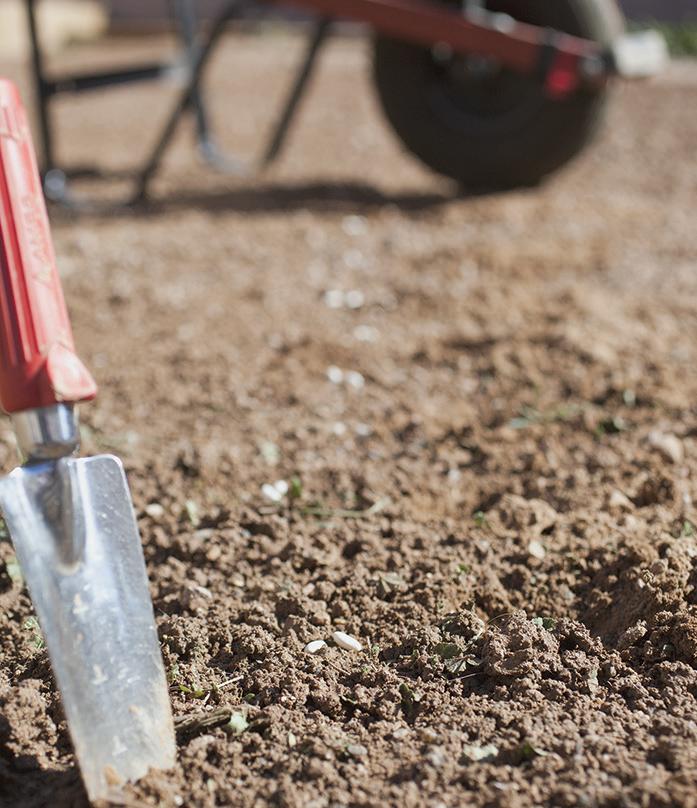


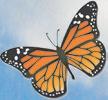


































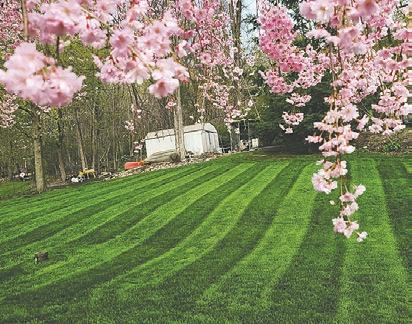

Seasonal allergies crop up at certain times each year, particularly in spring and fall. In 2021, approximately 81 million people in the United States were diagnosed with seasonal allergic rhinitis, according to the Asthma and Allergy Foundation of America. The Canadian Allergy, Asthma and Immunology Foundation says between 20 and 25 percent of Canadians suffer from allergic rhinitis.
Tree and grass pollen are notable contributors to allergies, as is mold. Verywell Health says allergies can be worse in certain areas. In the U.S., certain areas of the East Coast have high rates of allergies, while cities on the West Coast tend to be less harsh on those with allergies.
Since allergies can make life uncomfortable, people want to know all they can
do to overcome seasonal allergies. These strategies can help.
- Know the pollen count. Information is key, and knowing when pollen or mold counts are particularly high can help people take certain steps to avoid allergic reactions.
- Close the windows.
When pollen levels are high, closing windows to prevent breezes that can bring pollen inside a home can be an effective strategy. You also can utilize a HEPA filter on the home’s air conditioning system.
- Remove clothes worn outdoors and shower to rinse pollen off of skin and hair.
- While it can reduce energy usage, hanging clothing to line dry during high pollen counts can cause pollen to stick to freshly laundered items.
- Avoid gardening or
other outdoor activities when pollen is high. If you must be outdoors, wear a mask.
- Try an antihistamine product that will reduce your body’s reaction to the seasonal allergen. WebMD says butterbar as well as a plant-based Phleum pratense could be natural alternative antihistamine products.
- Use a nasal rinse to clean allergens out of your nose. This can help ease congestion and itching. Select sterile saline solutions or carefully follow directions for preparing rinses in neti pots.
- Corticosteroid nasal sprays can improve nasal symptoms. Speak with a doctor about how to use these products and how long to use them.
- Consider allergy shots, also known as allergen immunotherapy. These shots


can help desensitize the body to common allergies by using very small amounts of allergens over time. Eventually the immune system will produce a reduced reaction to the allergen.
Allergies can be troublesome. However, various strategies can help to diminish the often unpleasant effects of seasonal allergies.




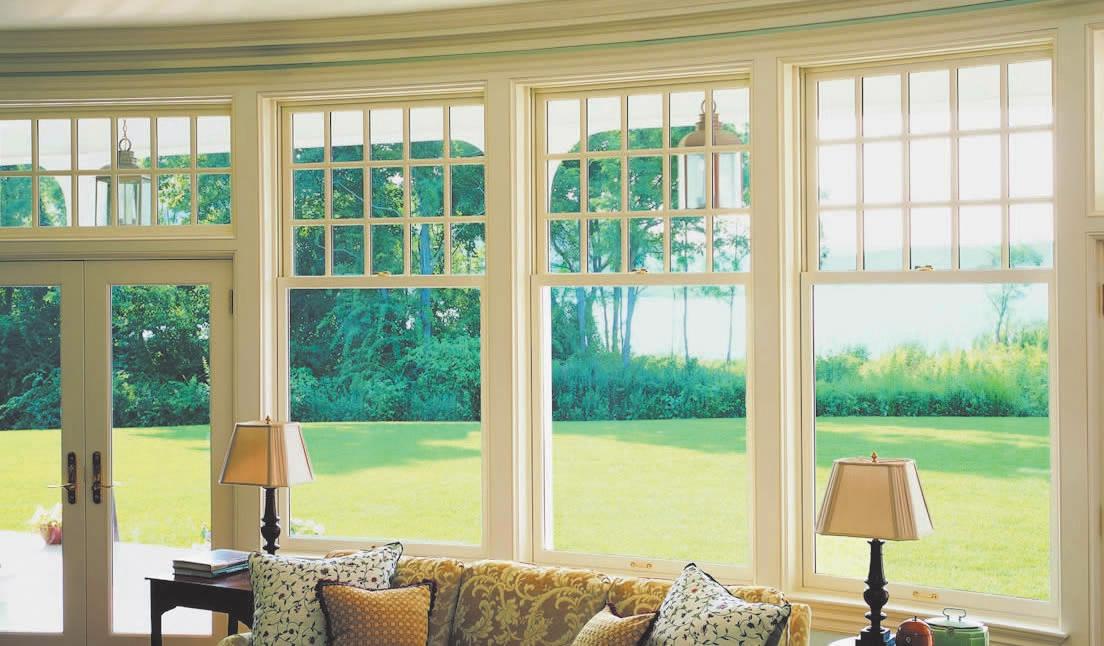










The great outdoors beckons billions of people across the globe every day. There’s much to be gained from spending time outdoors. According to the American Psychological Association, exposure to nature has been linked to improved attention, lower stress, improvements in mood, and reduced risk of psychiatric disorders.
With so much to gain from spending time in the great outdoors, it’s no wonder so many people embrace opportunities to get outside. When doing so, it’s important that individuals take proper precautions, such as wearing sunscreen and staying hydrated. But it’s equally important to protect your eyes before soaking up some springtime and summer sun.
• Purchase prescription sunglasses, if necessary. Sunglasses are vital to protecting the eyes from the sun’s ultraviolet (UV) rays. If you wear prescription eyeglasses indoors, then you should also wear prescription sunglasses when spending time outside. Even contact lens wearers may want to invest in prescription sunglasses for those times when they’re engaging in physical
activity outdoors. Sweat makes its way into the eyes when exerting oneself outdoors, and that can make contacts uncomfortable. Airborne allergens like pollen also can make contacts less comfortable when outside, and prescription sunglasses can help people avoid such discomfort while protecting the eyes from UV rays.
• Wear a hat or visor.
Hats and visors also help to protect the eyes from UV rays. The National Eye Institute recommends wearing sunglasses even on cloudy days, but it’s easy to forget them when leaving home or the car on an overcast morning or afternoon. Hats or visors can serve as a safety net on cloudy days when you forget to bring your sunglasses.
• Avoid rubbing your eyes. Whether it’s airborne allergens or debris, things can get into the eyes when spending time outdoors. In such instances, your first instinct might be to rub your eyes. However, University of Utah Health notes that rubbing your eyes can be very dangerous and increase risk for illness. Virus droplets can attach to hands and
enter the body through the conjunctiva, a thin layer of tissue that lines the inner eyelid. This can cause infection in the eye. Dust and dirt on relatively clean but unwashed hands also can enter the eyes upon rubbing them, potentially leading to irritation and infection. So it’s best to avoid rubbing eyes when they feel irritated and opt for eye cleaners and eyelid wipes instead.
• Keep your hands clean. Though it’s best to avoid touching your eyes with your hands, doing so is an instinctive response for many people. Frequent hand washing can keep hands free from bacteria and dust that can enter the eyes after they are touched or rubbed. No one knows how clean or dirty surfaces outside their own homes are, and surfaces outside may be particularly dirty or dusty. Frequent hand washing reduces the likelihood that dirt and debris will find its way into your eyes.
When the great outdoors beckons, individuals can take various steps to protect their eyes from damage and infection.













